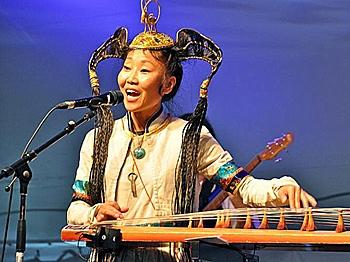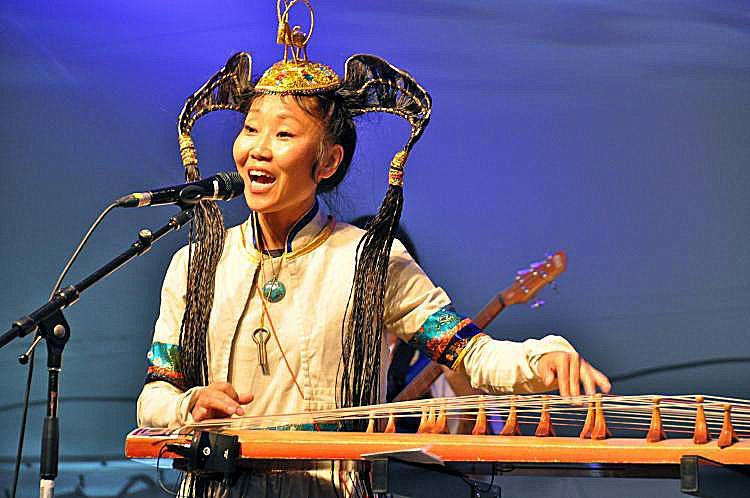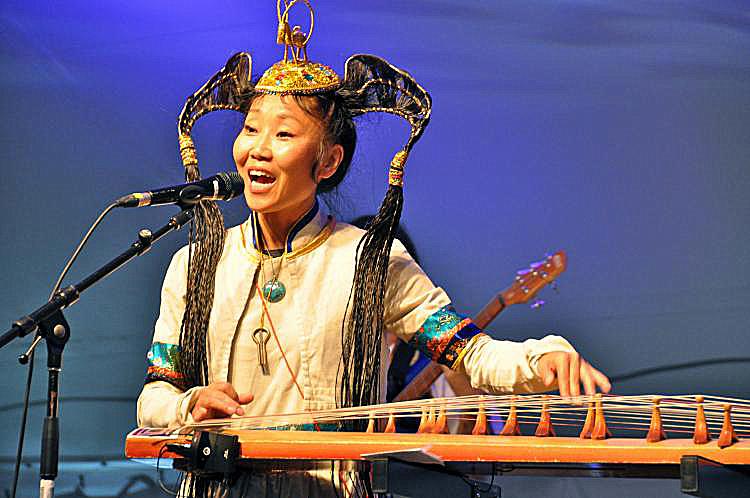White Cloud Weaves Mongolian Folk With American Rock
As dusk settled on Saturday August 14, Namgar thrilled the crowd at the Ottawa Folk Festival with its amplified versions of traditional folk songs.

Namgar Lkhasaranova as she sings and plays the yatag, a traditional Mongolian instrument. Pam McLennan/Epoch Times
|Updated:


